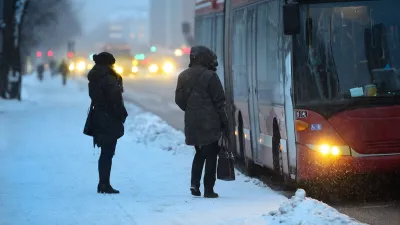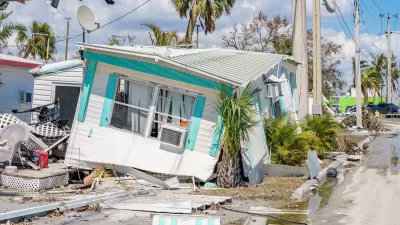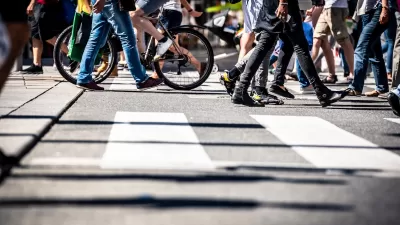NASA scientist James Hansen, considered to be the 'godfather of global warming' has co-authored a new report that shows the connection between 'extreme weather events', such as the drought most of the U.S. is now experiencing, and climate change.
In a report released on August 6 in the prestigious Proceedings of the National Academy of Sciences (PNAS), James E. Hansen, who directs the NASA Goddard Institute for Space Studies, makes the connection between what is termed 'extreme weather events', such as heat waves and droughts, and climate change.
In this video interview with the News Hour's Hari Sreenivasan, Hansen is asked, "....Explain how we know that these (extreme) events are ...not part of any natural cycle?"
"They are in fact a product of global warming and we can see that very easily", Hansen decisively answers.
In his August 3, Washington Post opinion, Climate change is here - and worse than we thought, Hansen makes the climate change-extreme weather connection clear.
"When I testified before the Senate in the hot summer of 1988, I warned of the kind of future that climate change would bring to us and our planet...My projections about increasing global temperature have been proved true.
Our analysis shows that it is no longer enough to say that global warming will increase the likelihood of extreme weather and to repeat the caveat that no individual weather event can be directly linked to climate change. To the contrary, our analysis shows that, for the extreme hot weather of the recent past, there is virtually no explanation other than climate change."
His view is not universally shared.
In his widely read "total turnaround" by climate skeptic, Richard Muller, states in his July 28, New York Times opinion, "The Conversion of a Climate-Change Skeptic, "...the recent warm spell in the United States happens to be more than offset by cooling elsewhere in the world, so its link to "global" warming is weaker than tenuous."
Hansen's paper may very well change the bar from discussing what the effects of global warming will be to what they are now.
FULL STORY: James Hansen: Extreme Heat Events Connected to Climate Change

Maui's Vacation Rental Debate Turns Ugly
Verbal attacks, misinformation campaigns and fistfights plague a high-stakes debate to convert thousands of vacation rentals into long-term housing.

Planetizen Federal Action Tracker
A weekly monitor of how Trump’s orders and actions are impacting planners and planning in America.

In Urban Planning, AI Prompting Could be the New Design Thinking
Creativity has long been key to great urban design. What if we see AI as our new creative partner?

Portland Raises Parking Fees to Pay for Street Maintenance
The city is struggling to bridge a massive budget gap at the Bureau of Transportation, which largely depleted its reserves during the Civd-19 pandemic.

Spokane Mayor Introduces Housing Reforms Package
Mayor Lisa Brown’s proposals include deferring or waiving some development fees to encourage more affordable housing development.

Houston Mayor Kills Another Bike Lane
The mayor rejected a proposed bike lane in the Montrose district in keeping with his pledge to maintain car lanes.
Urban Design for Planners 1: Software Tools
This six-course series explores essential urban design concepts using open source software and equips planners with the tools they need to participate fully in the urban design process.
Planning for Universal Design
Learn the tools for implementing Universal Design in planning regulations.
Gallatin County Department of Planning & Community Development
Heyer Gruel & Associates PA
JM Goldson LLC
City of Camden Redevelopment Agency
City of Astoria
Transportation Research & Education Center (TREC) at Portland State University
Jefferson Parish Government
Camden Redevelopment Agency
City of Claremont





























